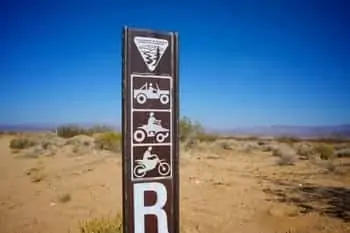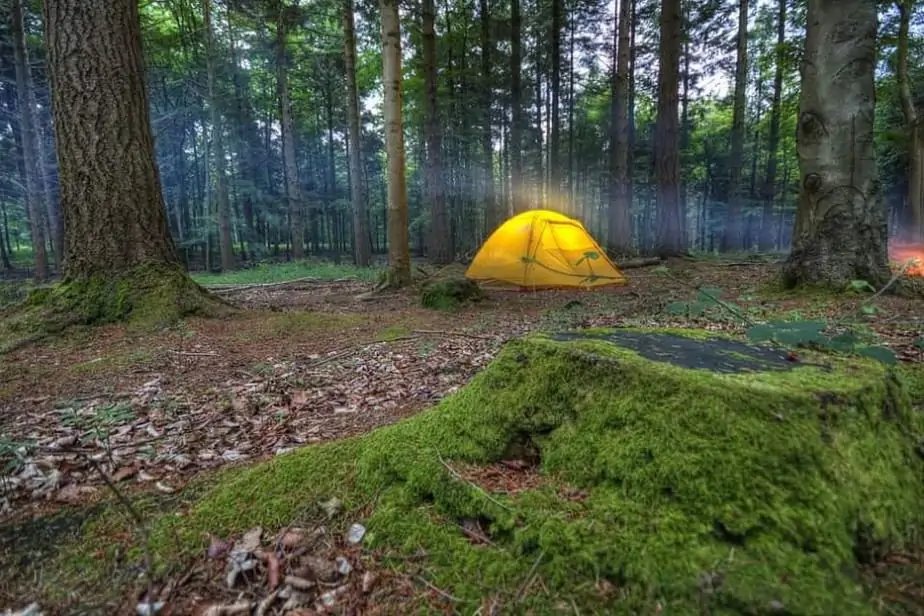A man against the elements. The excitement, the solitude, and the challenge that it all brings represent such a thrill that is not easily compared, let alone matched by anything else. Ditching the comfort of city life can be a thing to bear, but you would be surprised at how easy it becomes something to get hooked on.
What sets aside wild or wilderness camping from regular outdoor camping is that not only are we removing the solace of urban life civilization, but we are diving deeper into the untamed territory by veering off organized campsites in search of a far more personal and feral experience.
You may think that just getting away from the city and into the woods, so to speak, would be enough to clear your head off of everything, but that can depend on how populated average campsites are. Camping is, after all, a growing trend that goes far beyond people wanting to relive their Boy Scout glory days.
Contents
Wild Camping: Why Do It?
Whether folks just want to get away from their daily routines or look to put their survival skills to the test, organized campsite lots have grown larger and larger, perhaps at the same rate rural areas diminish over time to become more metropolitan. Ironically, this can all work to take away from the experience of going out in the wild.
Encountering many people when camping can mean going through all of the same things we’re trying to stay away from when leaving town. It can be noisy, crowded, and interlaced with all the unwanted interactions we desperately want to separate ourselves from. This is when and why wilderness or background camping can set off to be exceedingly appealing.
Wild Camping: Is It Safe?
Make no mistake, while these campsites have their downsides in that regard, they still provide all the safety measures and support designed to alleviate the rigors of overnighting in the great outdoors. In addition, they save us from having to worry about getting a permit, bother with the legality and regulations of where we are camping, and guarantee protection from animals and bad weather. They provide a place with an accessible water source, a secure area to build a fire, and an overall sense of community. You can find comfort in it if you face any problems or actual emergencies.
Having said that, we cannot ignore the fact that the dangers of facing nature in its barest form are part of what makes camping so exciting and the definition of an adventure. Are we camping if we stay inside our RV, where we can have a hot shower and watch TV while microwaving our dinner? It would be easy to say solitude and introspection would be an obsolete idea when you can hear your camping neighbor listening to the Eagle’s game on the radio.
This is why many people prefer to go wild camping instead because it comes with a sense of fulfillment that keeps you on edge all along. Like the rollercoaster, it is the fun that comes with some degree of danger. And having to figure out how and where to build a fire properly, finding an appropriate and clear water source, and knowing how to avoid and even fence off wild animals are all exciting yet dangerous endeavors.
Rules For Wild Camping
By removing the average campsite as our location to camp, we automatically require a well-laid-out plan to be able to make it fun and, quite candidly, out alive. It is not called the wild without reason, and it demands respect as soon as you enter it. We do not mean only conservative respect that would allow for a pleasant experience with nature during your stay. We mean to take care of it by leaving little to no trace of your presence.
The Leave No Trace Principles, enforced by the National Park Service, US Forest Service, and the Bureau of Land Management since the 1980s, provides a handbook with seven rules that regulate the effects of human presence on the wild. They remind us that we are visitors to nature’s realm, and we should strive to minimize our figurative prints from wherever place we choose to recreate.
These seven principles state that:
- We must dispose of all of our waste properly.
- Leave what we find how we found it.
- Travel and camp on durable surfaces.
- Be considerate of other campers.
- Minimize campfire impacts.
- Plan ahead.
- Respect wildlife in all its forms.
If these steps are taken, you ensure that your deal with the wild is built on balance, which is particularly important when we are steering from the beaten path and into the unknown.
Wild Camping: Aspects To Consider
We immediately increase our chances of running into wildlife when we decide our nearest campsite is too crowded or not rural enough. This excerpts a responsibility we wouldn’t otherwise have when camping on organized grounds. A good campsite is made, not just found, and this is why being aware of the weather forecast, local wildlife, and its natural processes such as mating and nesting season are paramount.
Choosing to forego any research about where you will be camping is the recipe for a counterproductive and unnecessarily dangerous outdoor experience.
Wild Camping Spots

If you are wondering where you can do some wild camping, the answer is nearly everywhere. The Bureau of Land Management and US National Forest and Grasslands oversee the proper treatment of these lands and their integrity. Still, we have the freedom to camp wherever we want except for places where it is clearly stated that we cannot.
They use the term dispersed camping when referring to staying outside the limits of popular campsites, meaning staying in non-developed areas without amenities and, consequently, without any daily fees to use them.
As long as we are self-sufficient during our stay and follow the principles we discussed earlier, we can be there. Now, this is not without its restrictions like the length of our stay. You can camp somewhere up to 14 days at a time during a 28-day limit. After this grace period, you can choose to relocate to another site within 25 miles without breaking any rules.
You must also have a water source no further than 900 feet away and avoid camping too far from established roads. The latter is to ensure that if an emergency were to arise, there would be easy access points to reach you and give you the care you need. We want solitude and privacy, but we must also be conscious of getting out of the makeshift campsite in the same condition we entered it.
Conclusion
So, whether you are into rock climbing, water tripping, or just backpacking in remote areas, you are partaking in some form of free wild camping. We must be prepared for the worst at all times, carry only what we need and make sure we identify all of the potential hazards we make ourselves vulnerable to by avoiding nearby campsite neighbors.
Regardless of where you are in the world, you are opening an entire realm of possibilities to take place when going out in the wild. Mind the wildlife, the seasons, and the weather. Mind your resources and your health. It is supposed to be fun, not stressful.
We can all think we are Bear Grylls, but the truth is that some of us are not conditioned to enjoy the rudimentary conditions that need to be undertaken when camping in the wild. Let us find the challenge we are looking for within safe parameters and remember that even Mr. Grylls is accompanied by a camera crew that is there to serve him with more than just emotional support.
